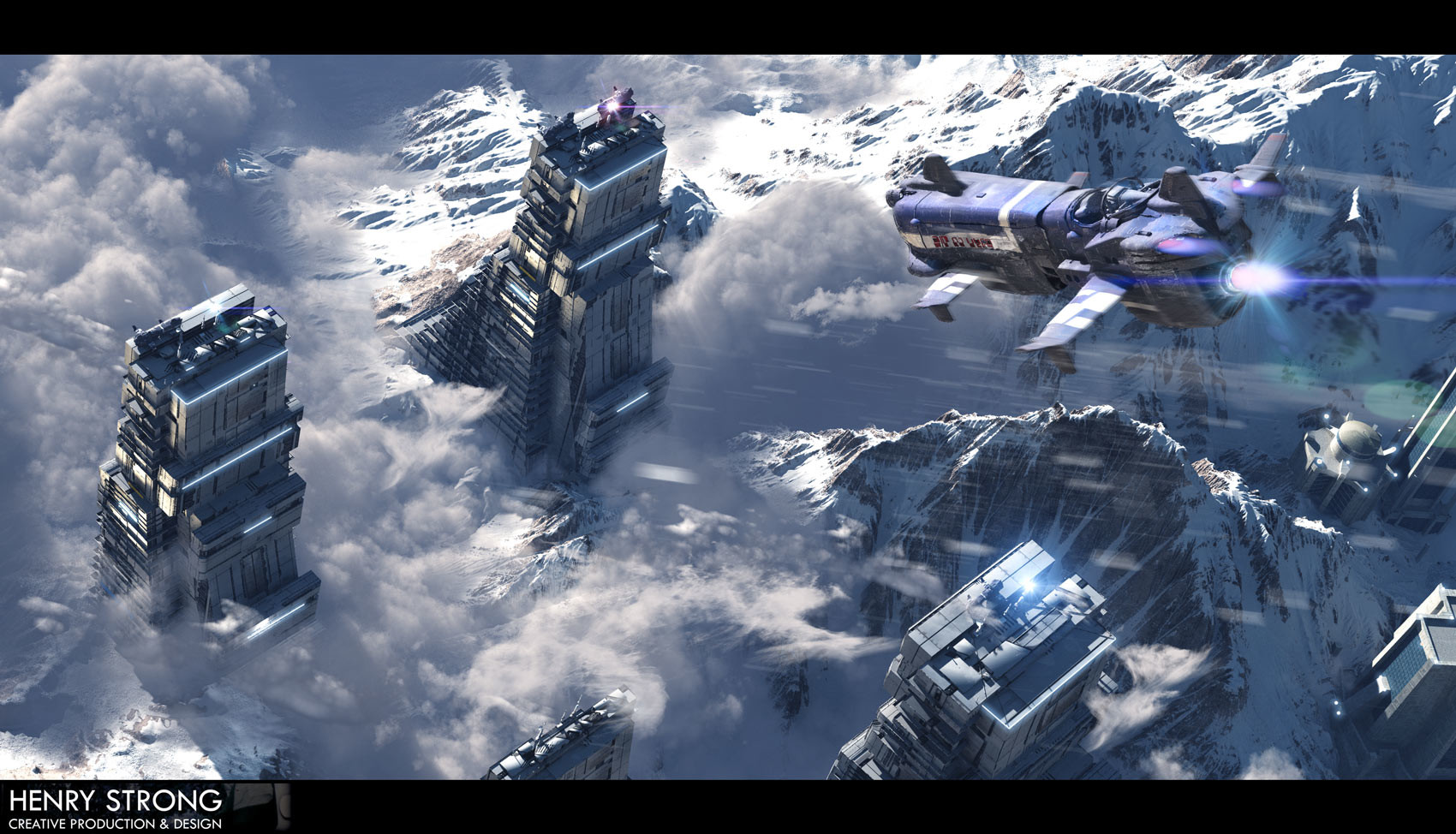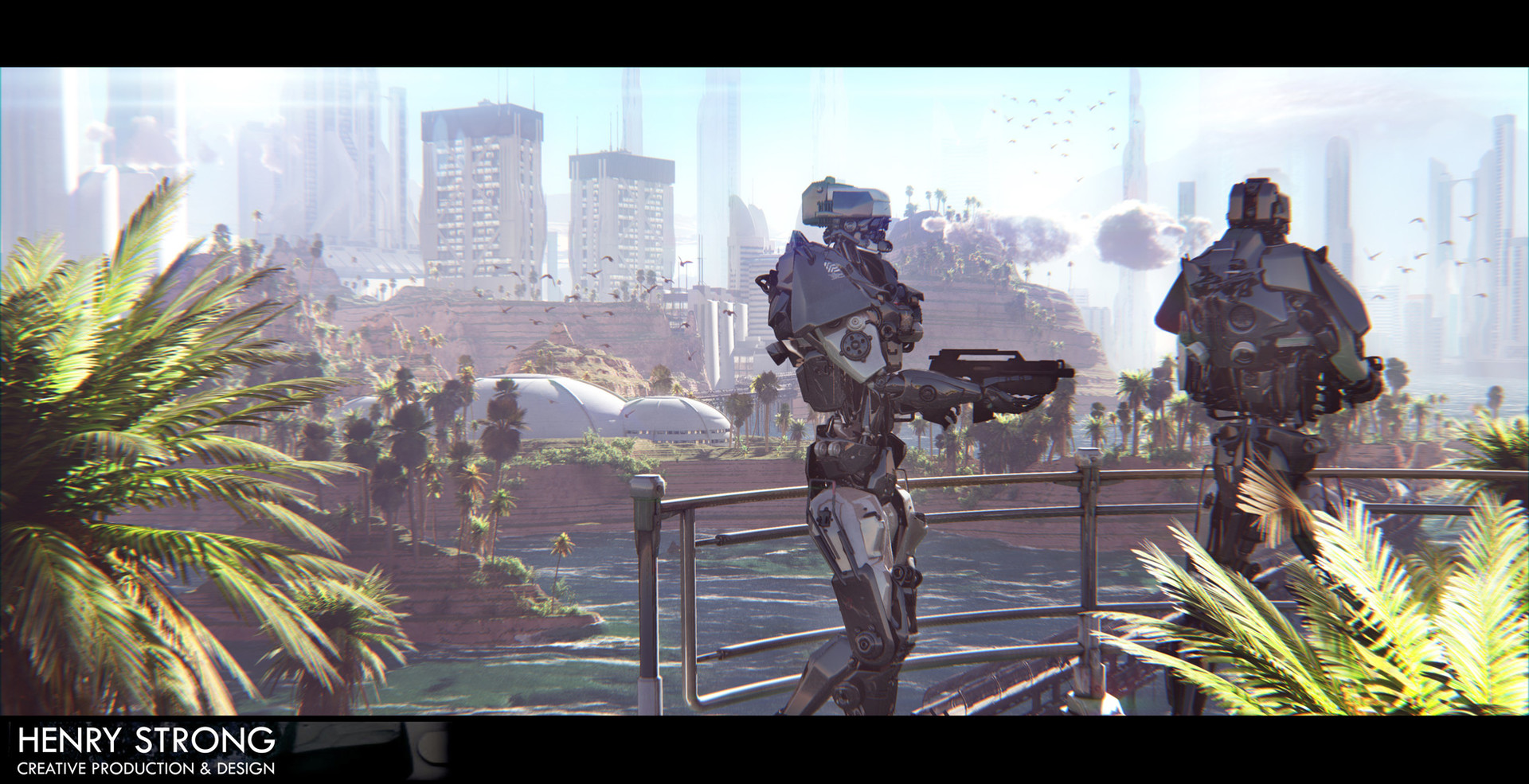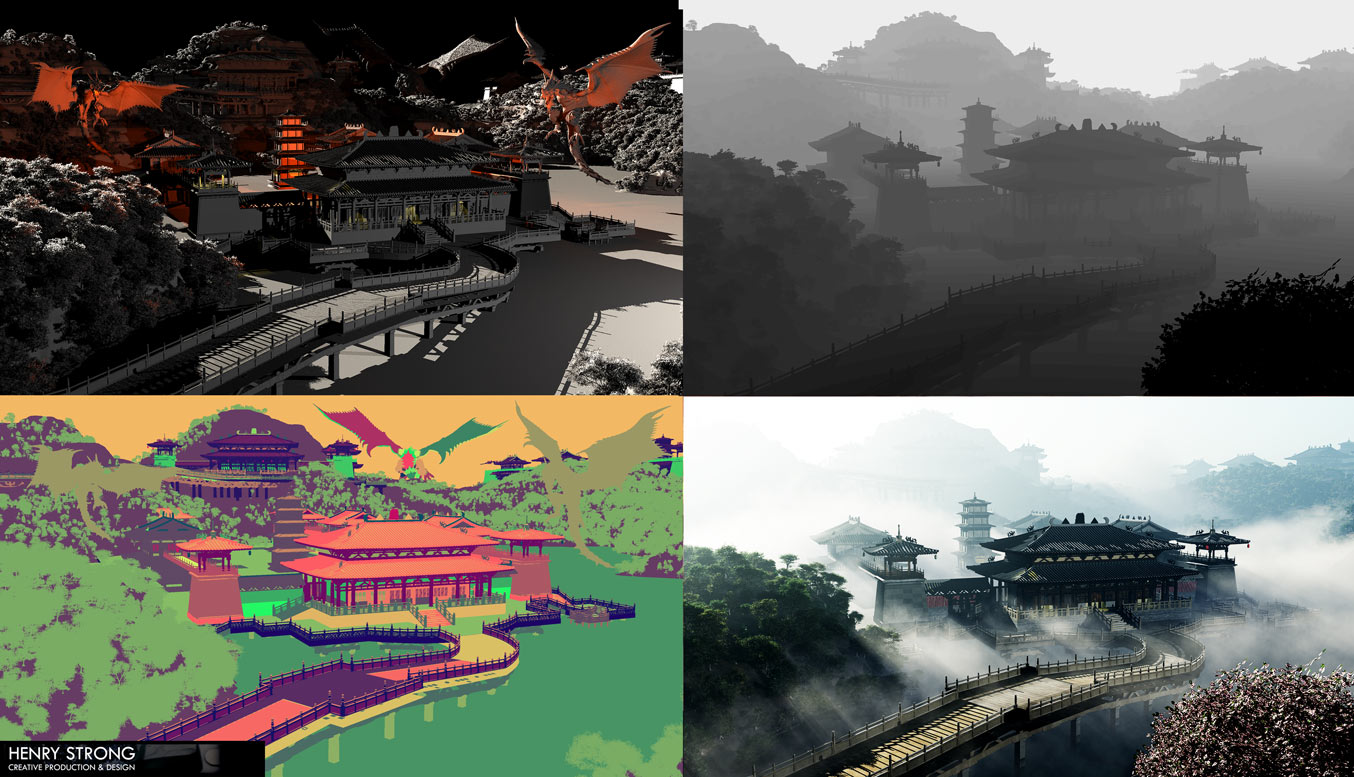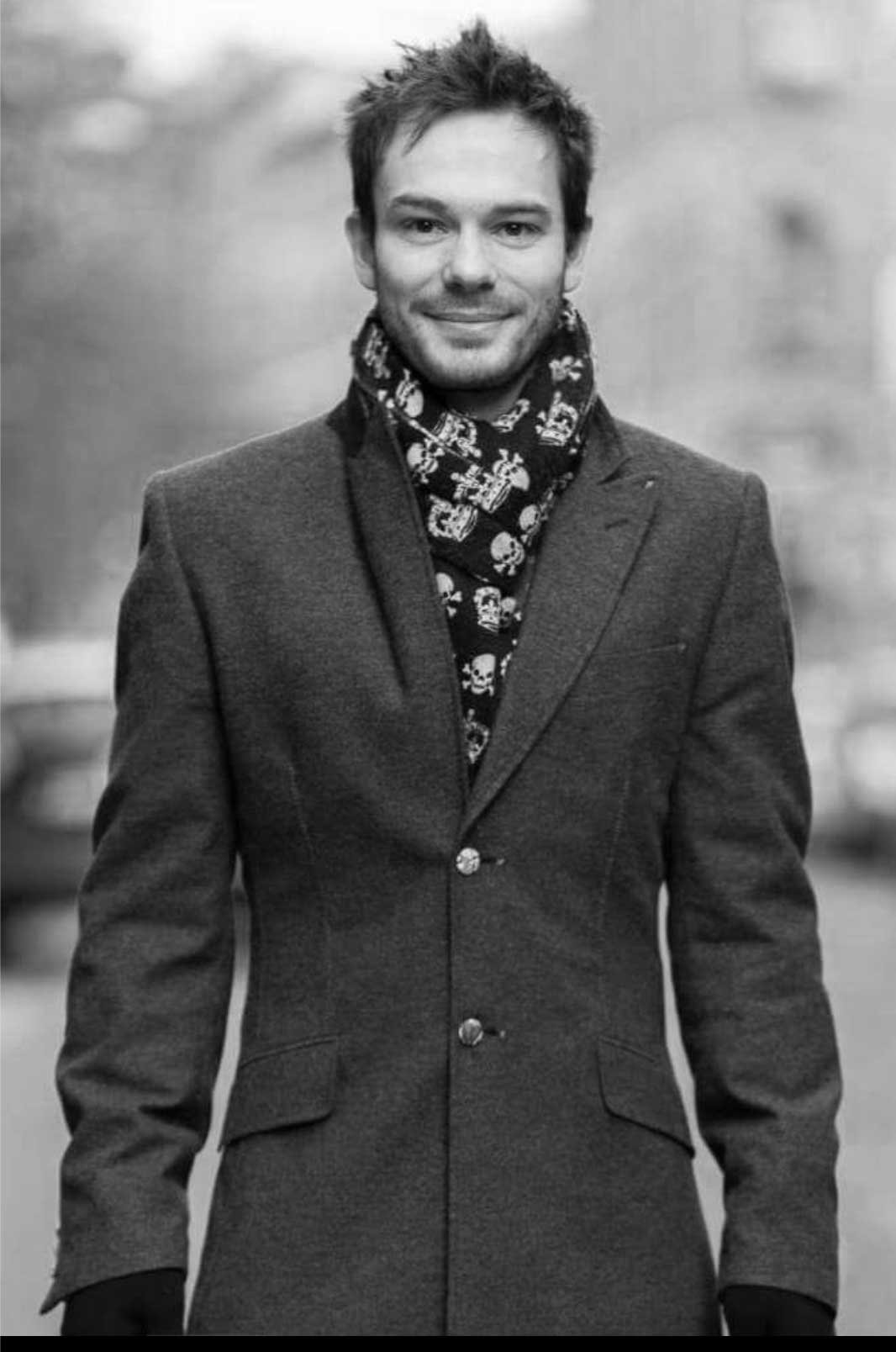Meet 3D generalist and VR/AR developer Henry Strong. Henry specializes in 3D, VFX, game development and film production. Now based in New York, Henry took some time out of the everyday excitement that comes along with living in the Big Apple to share his experiences with VUE!
Check out what he has to say on how he got started, how VUE has helped him in his career, where he gets his inspiration, and more, in this Spotlight Interview!

What is your background?
I currently work as a Senior 3D Generalist and VR/AR developer for a global studio based in Manhattan. Originally, I studied architecture for my BSC and MA and learned a very wide range of skills across 3D, animation and design. From everything I had learned, I thought the role of a 3D generalist was a great way to utilize all of the skills I developed into one. Since joining my current company, it has morphed into offering almost every level of service across 3D animation, pre-visualization, motion capture, broadcast production and more recently virtual reality and augmented reality. By covering all of these bases, I get to exercise my skills through my knowledge and experience to really help projects look their best and make sure they stay on schedule.
My role is essentially to have good overall knowledge and experience across several 3D roles. These can range from 2D/3D animation, VFX, texturing, lighting, rigging, or working within gaming engines to develop VR/AR concepts. I also think a large part of what I do is solving problems - a lot of the projects we work on are under tight deadlines, so being able to think on my feet and solve creative or technical issues has been essential throughout my work.
I would say the greatest aspect of my work is working with the fantastic teams within the company. I always feel the work I produce is appreciated and genuinely feel the problematic scenes I help to solve are noticed and ultimately enhance the overall project.

I would say my expertise is predominantly fixing problematic scenes (for commercials, TV, or movies) that need animation, lighting or overall compositional improvement. As a senior, I do feel I get a good amount of creative freedom, and I feel this reflects in how I find the best solution.
As mentioned previously, my days can be very different depending on what projects I am working on. As we have a number of studios across the world, we receive a great deal of very varied projects. My day can start with a creative brainstorming meeting, where I can offer technical solutions/suggestions or work arounds for a brief with a client. I can then work on some animation changes on any urgent work, followed by being in an editing session with clients, working across animation projects. This can cover live action VFX, 2D/3D animation and editing, so I really use a lot of what I have learned in these sessions.
VR and AR are also becoming a very significant part of my day-to-day and working within gaming engines is becoming more commonplace. Understanding the positives and limitations of the technology is key, and with this, I can create new concepts for clients while creatively implementing them into new projects. My job entails a fair amount of travel, which includes visiting clients/studios, so they can test out the VR and AR first-hand and talk through all technical aspects.
I feel going forward, looking at longer projects, like film or animated features, would be a real goal of mine. Also focusing all of what I have learned over the past 15 years to help further develop and expand my current studio portfolio.

What is your experience with VUE?
I think the first time I used VUE was back in 2012/2013. I remember that it was really having quite a profound effect on the 3D work I was producing. Back then, the freedom it gave me to create incredibly detailed environments opened new doors/possibilities and enabled me to create really cinematic and realistic artwork. I also remember having a small film project in my mind and was thinking that it was simply too vast for me to create in just 3ds max (the native 3D program I was using at the time). With VUE, I was able to create atmospheres and clouds in just a click of a button with thousands of variations. This really empowered my thought that I could literally create anything.
Without a doubt VUE helped my career, from the hundreds of hours working and learning VUE, I was able to create realistic/cinematic mountain ranges with atmospheres, vegetation, and cloud formations. It helped me get noticed and accepted into the community, enabling some of my work to be featured in a few magazines and websites.
I had been using VUE creatively and more on a personal level until I moved to my previous studio where I used it on a more professional level. It was mostly for architectural visualization and animation, but it helped me to learn and understand how to use it in a more commercial workflow. I must say that my personal work is where I felt I gained the most. I was quite proud that I could create something I had previously thought I would have never been able to. Especially in my work, ‘Returning to Base’, where I used several techniques to create the scene as well as a number of other software, but it was with VUE that I was able to build the environment and really bring the work to life.
I would say the most challenging part of a recent project was more down to my own error! But being able to identify what I had done and then solving the issue was the important part. The project was a space scene I was working on for a concept, and the camera was orbiting a planet just skimming the cloud layer. As this was a personal project, I was having to render on my local system, so for reasons I could not work out at the time, the renders were taking nearly 3 times longer than they would previously, and with the animation being 4k it was taking hours per frame to render. After taking what seemed like a lifetime to work out, whether it was due to the render settings, environment or cloud settings, etc., I realized I had added an additional cloud layer in the modifier stack by mistake. Due to this, it was causing a double ambient light to shine through. I guess for the next project, it’s just another item to add to my check list before I render!

Tell us how you organize, plan, and prioritize your work? What other software do you use?
Regarding other software, I do use quite a few, usually depending on what kind of project it is. Predominantly, I use 3DS Max or Maya, Zbrush, Substance Painter and either After Effects or Nuke. With this collection you can literally create anything, for any platform.
Regarding planning my work, it starts off with something inspirational I have seen. It might be from a photo I have taken, a sketch, or something I found online. Then I start to sketch out the composition and drop it into Photoshop to put a very rough composition together. After this, I work out what element I need to create and start listing and batching the assets together (i.e. sci-fi buildings, then vehicles, etc.). Once these are built, the fun begins, and I can begin placing them into VUE. I usually start with just a very simple environment and rough land layout, then adjust the composition accordingly. Once I’m happy with this, I will start working on the lighting and atmosphere. Afterwards, I begin working on detailing, such as bringing life to the work with vegetation or animals. Because VUE works very well as a semi-real-time render you’re able to build extremely detailed landscapes quite quickly, which I really feel helps my creative process.

Do you have any advice to share?
My advice would be to stay patient with your learning. To be good at anything takes time and practice. Try not to get frustrated with the amount there is to learn, just understand that the more time you invest the better work you will produce. Give yourself smaller, more manageable projects where you have something to show off at the end that you can use in your portfolio or show reel. I mentioned above that I solve problems all day at work, so learning how to solve these problems will remove any creative barriers you have and unlock all the potential you have to create amazing work.
My go-to website has always been YouTube. There is such a wealth of information and learning on there. I would say all the programs I have learned have been self-taught and from watching YouTube tutorials. I also take advantage of the comments section as well. There are so many amazing artists out there who take the time to reply and help you. I actually really feel part of a community when someone replies and helps you solve something. I have also used platforms such as linda.com or Digital tutors for some projects, but I always find that by creating your little projects and using elements from tutorials, you learn a lot more, plus the knowledge stays with you (unless its remembering if you leave extra cloud layers in or not!)
Coming from an architectural background I do get a lot of inspiration from unique buildings and as I’m currently living in New York there is a lot of inspiration to draw from. Also, just coming across amazing work on ArtStation and DeviantArt has been a big inspiration. I have discovered a number of amazing concept artists where their compositions really inspire me to produce my own unique work.

Would you recommend VUE to other artists, and why?
I would absolutely recommend other artists to check out VUE. The versatility and scale are so incredibly powerful to create much larger format environments that look amazing and, once you know the basics, are very easy and quick to produce. There is also a personal learning edition which was a fantastic way for me to learn the basics, but also just to test out how to use it. If you have a background in 3D, you will find it very easy to use, and will find a ton of additional features and adjustments you can make to any environment.

Thanks, Henry! Don’t forget to check out his projects at: https://henrystrong.net/
Matt Riveccie
I was raised to grow a passion for image science and technologies.
After graduating with an Engineer degree in Telecommunications, I joined e-on software back in 2003 as the PR Manager.
During my time at e-on, I got involved in many aspects of the company: software business development, product road maps and go to market strategies, technical and customer service, sales and BtoB, project development and delivery, and a lot more.
After Bentley Systems acquired e-on software, I have accepted embracing new challenges in becoming the Director of Product Management for e-on software products.
On my spare time, I love traveling the world as an avid Landscape photographer, and also enjoy playing guitar.
